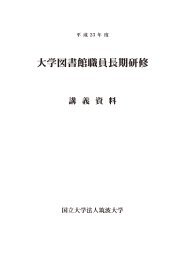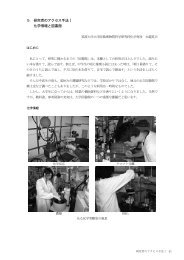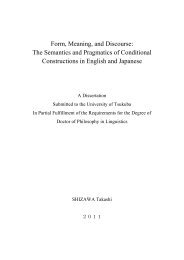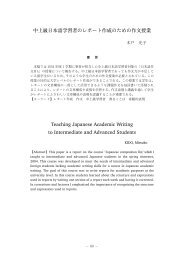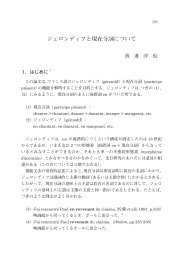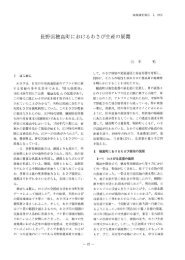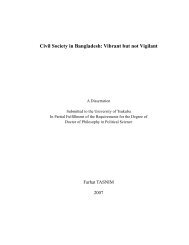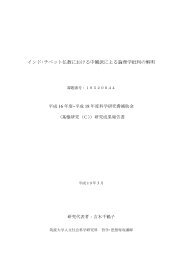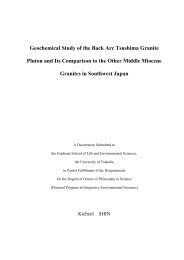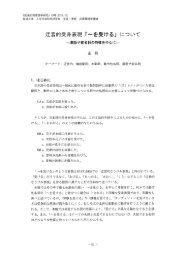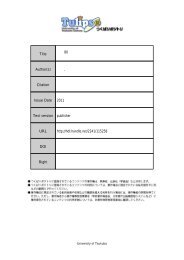TQM Model of Elements-Deployment Table Developed from Quality ...
TQM Model of Elements-Deployment Table Developed from Quality ...
TQM Model of Elements-Deployment Table Developed from Quality ...
Create successful ePaper yourself
Turn your PDF publications into a flip-book with our unique Google optimized e-Paper software.
In 1960, manufacturing industries were facing and busy with how to license with<br />
new technology and how to reinforce with that the productive capacity, and the concern<br />
for TQC were weakened. However, how to deal with the liberalization <strong>of</strong> the trade and<br />
capital market, there were Komatsu (1964 Deming Prize recipient was shown later) and<br />
Toyota Motor Co., Ltd. (1965) and Bridgestone Tire Co., Ltd. (1968), etc. as an<br />
enterprise that had recognized the necessity <strong>of</strong> TQC, and it was called the age <strong>of</strong> "The<br />
establishment <strong>of</strong> TQC base".<br />
When entering 1970's, "It needs to foster strong company constitution against the<br />
recession" was shouted to deal with Dollar Shock (1971) and the First Oil Crisis (1973),<br />
market quality competition were intensified more and more, and the concern to TQC to<br />
fight for new product and new technological development power shortage had risen.<br />
In 1980, the enterprise that economical conditions were recognized for needs <strong>of</strong><br />
effort to the recovery after Second Oil Crisis (1978) (The trade balance sheet had fallen<br />
<strong>from</strong> 24.6 billion dollars in 1978 to 1.8 billion dollars in 1979) and as for the enterprise it<br />
was recognized delay <strong>of</strong> the correspondence to the diversification and upgrading<br />
concerns <strong>of</strong> market trend, new product and new technological development power<br />
shortage, and weakness <strong>of</strong> departmental cooperation and system <strong>of</strong> integrated<br />
management increases in 1980's. Eventually TQC introduction needs were became the<br />
most active as described in Chapter 2. Paragraph 1. There were Sekisui Chemical Co.,<br />
Ltd. (1979) and Fuji Xerox (1980) in the enterprise <strong>of</strong> which the introduction motive<br />
these. In addition, there are Asumo (1988) and Fuji Iron Works (1988) in the enterprise<br />
that the trade friction became a motive. Moreover, the companies that appreciation <strong>of</strong><br />
the yen becames a motive were JUKI (1981), Japan Steel Works (1983), Nippon Carbon<br />
(1985), AISIN Chemical Worker (1987), Asumo (1988), AISIN Shinwa Co., Ltd. (1989),<br />
Hoko Industry (1989), and it continues to AISIN Hoyo Co., Ltd. (1990) and Amada<br />
Wasino (1990) in 1990's.<br />
In 1970-1980's, "How to forecast and overcome <strong>of</strong> the management crisis" was seen<br />
as major active motive were seen. It could be said, 1980 year <strong>of</strong> 1970's was<br />
"Breakthrough age by TQC". However, the sprout <strong>of</strong> the internationalization (overseas<br />
production and achievement <strong>of</strong> international quality) was seen in the latter half <strong>of</strong><br />
1970's and there was an company group by which a strong intention <strong>of</strong> the management<br />
person "Challenge to the management vision" <strong>of</strong> taking the action on the market and<br />
the technical innovation in advance became a motive in the latter half <strong>of</strong> 1980's. In a<br />
typical example, Tokai Kasei Industry (1975), Pentel (1976), AISIN AW Co., Ltd. (1977),<br />
Tyuetsu Alloy Casting (1978), Kyushu NEC Corporation (1979) <strong>of</strong> for "Achievement <strong>of</strong><br />
an international quality" and Nihon Zeon (1985), Komany (1985), Hazama-gumi (1986),<br />
AISIN Chemicals (1987), Daihen (1987), AISIN Light Metals (1988), Amada Wasino<br />
12



